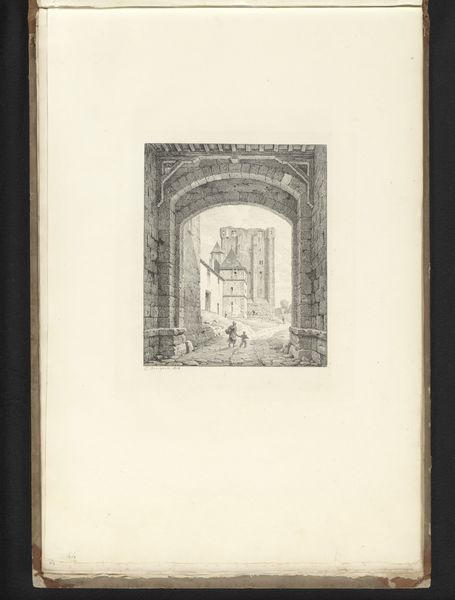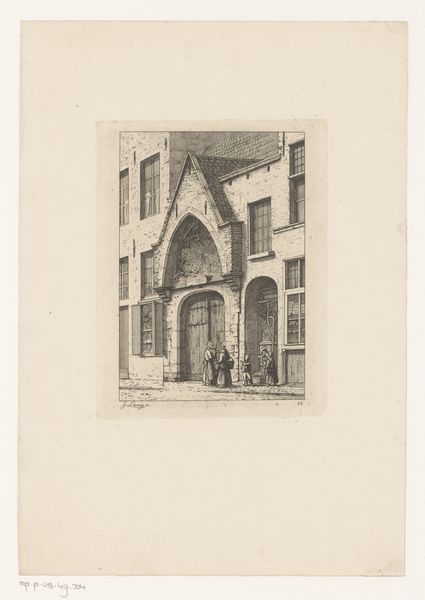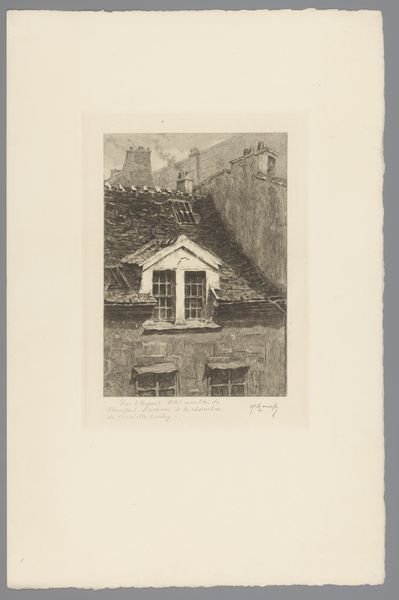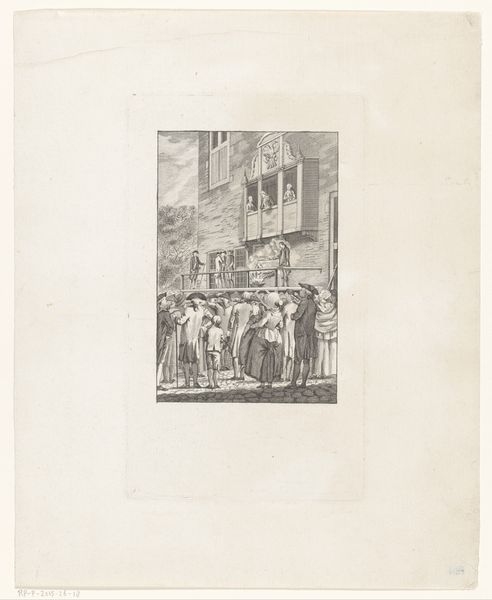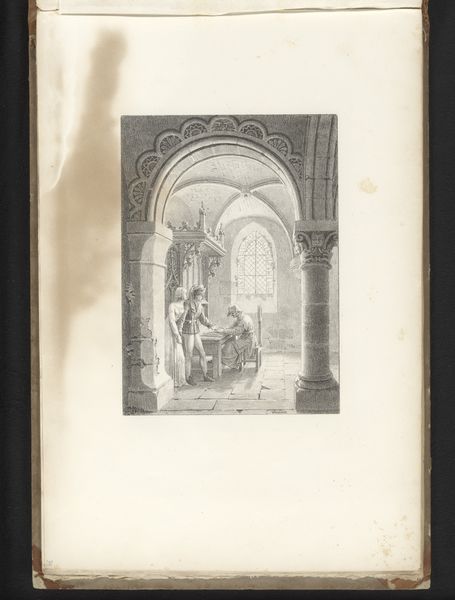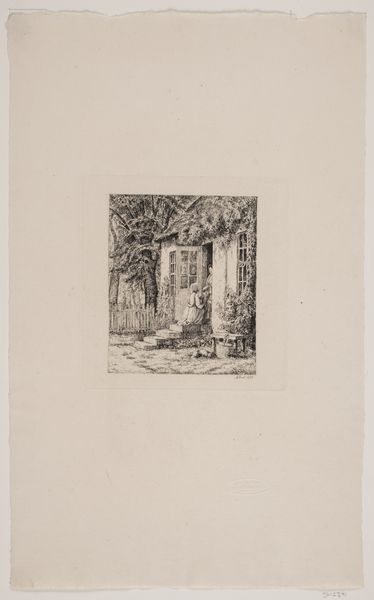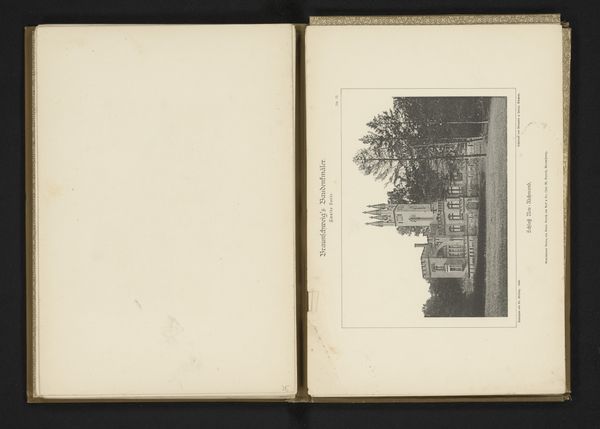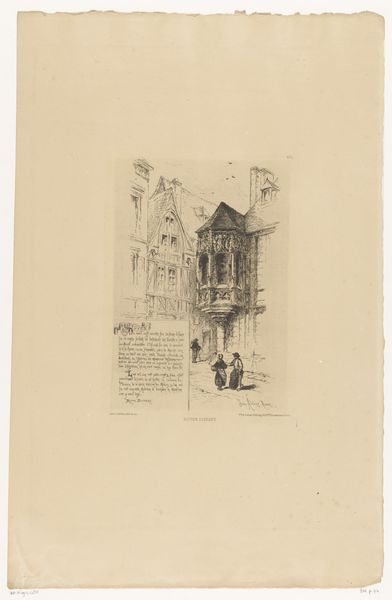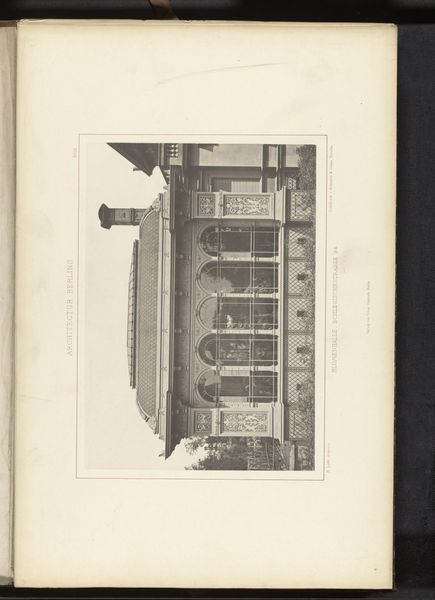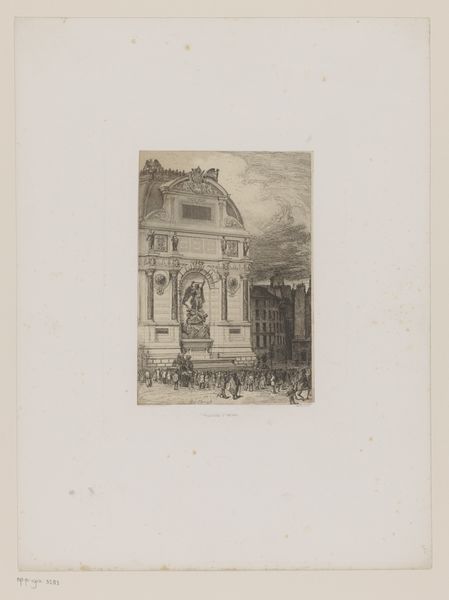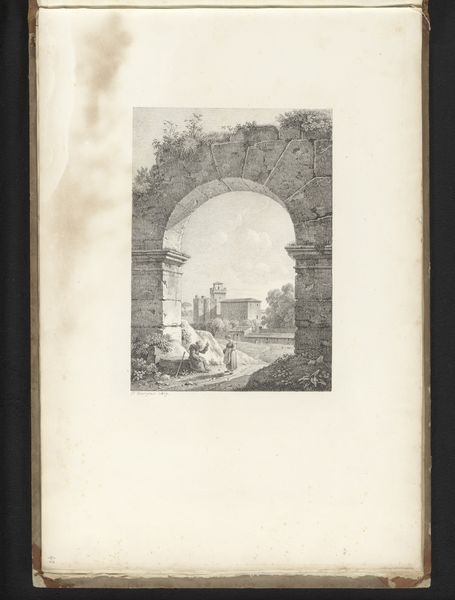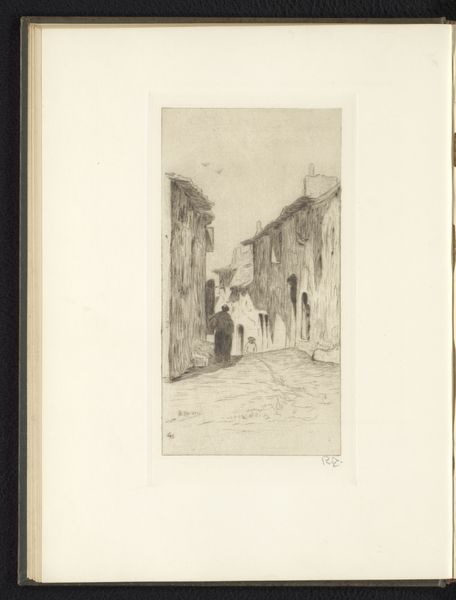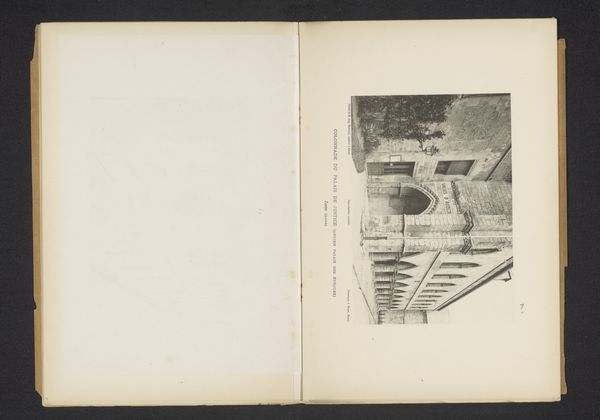
drawing, ink, pen
#
drawing
#
aged paper
#
toned paper
#
pen sketch
#
sketch book
#
landscape
#
figuration
#
personal sketchbook
#
ink
#
romanticism
#
pen-ink sketch
#
pen and pencil
#
line
#
pen work
#
sketchbook drawing
#
pen
#
cityscape
#
history-painting
#
sketchbook art
Dimensions: height 300 mm, width 435 mm
Copyright: Rijks Museum: Open Domain
Curator: This delicate ink drawing captures a religious procession at the Abbey of Jumièges. Executed in 1818 by Horace Vernet, its linear precision is remarkable. Editor: My initial response is one of austerity. The monochromatic palette, combined with the ruined architecture, creates a somber mood, perhaps speaking to the fragility of religious institutions after the revolution. Curator: The penmanship is exquisite. Note the artist's efficient use of line to create depth and volume in the crumbling abbey ruins. It embodies Romanticism’s fascination with sublime decay and the power of nature. Editor: Indeed, but I see more than just aesthetics at play. Religious processions in 19th-century France were deeply intertwined with social and political power. This scene might be interpreted as Vernet positioning religious practice within evolving cultural spaces. Are these assertions of tradition or nostalgic echoes? Curator: The beauty resides precisely in that tension! The drawing utilizes compositional techniques to communicate visual balance despite its asymmetrical features. Note the strategic positioning of the figures against the massive, decaying abbey walls, a masterful interplay of form and texture. Editor: But the abbey itself symbolizes historical shifts! It represents the sites of the revolution, and its visual deconstruction asks us to examine the instability inherent in institutional memory. How does religious procession reaffirm faith in the aftermath? Curator: I appreciate your socio-political framing; still, I remain captivated by Vernet's artistic achievement. The linearity generates motion. Look closely: the meticulous layering creates gradients to mimic light. These components speak volumes without relying on overt sentimentality. Editor: A valid observation. And perhaps this points us toward understanding these historical shifts as something other than simply nostalgic or performative. To engage Vernet's composition offers us complex insight regarding post-revolution religious performance, especially concerning space. Curator: Ultimately, this artwork acts as an exploration between form, narrative, and Romanticism in nineteenth-century France, giving voice to how line, texture, and ruin communicate meaning. Editor: For me, it highlights how aesthetic practices interact with identity, ideology, and historical contexts. In particular, this encourages a crucial investigation into religious procession in light of the social disruptions throughout France during the 1800s.
Comments
No comments
Be the first to comment and join the conversation on the ultimate creative platform.
